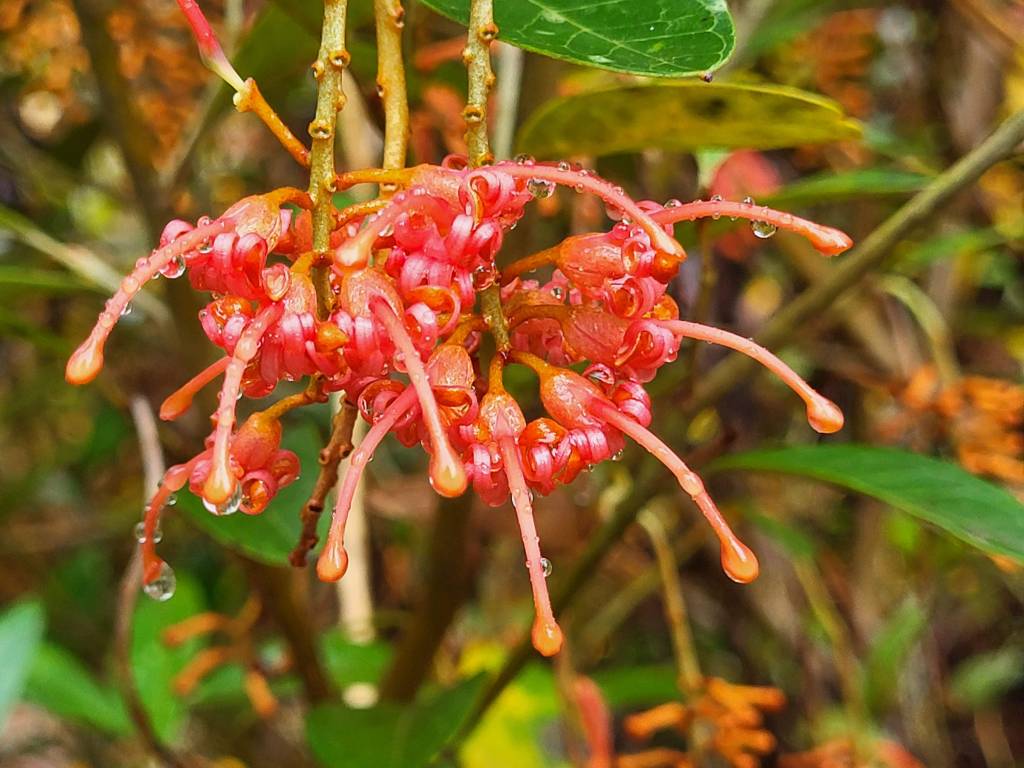I did not get out into the garden yesterday, a rarity, but with a chilly rain throughout the afternoon there was good reason to stay warm and dry indoors. Today, my early evening stroll reminded that I must get out to spray the deer repellent. Of course, this can’t be done in the rain, but I’ve watched yellow speckled leaves of one Japanese aucuba (Aucuba japonica ‘Gold Dust’) slowly disappear in recent weeks, and now that this one is bare I assume deer will move on to the next.

I also notice that flowers of the ‘Spider’s Web’ fatsia (Fatsia japonica ‘Spider’s Web’, above) are gone, not past bloom, but gone, nipped right down to the leaf bud. Undoubtedly, deer are the culprits. This is not a huge problem, leaves were not nibbled, though I am always curious to see the fatsia’s flowers develop that peak in late autumn just as overnight temperatures are regularly falling below the freezing mark.
I attribute the late season flowering, when most pollinators are long gone in this garden, to planting the fatsia far out of its comfort zone. While it is listed as hardy below ten degrees (Fahrenheit), I expect this Japanese native to be from the warmer end of the island, and expect I’ll have to give it some protection if temperatures ever drop nearer zero again (which is likely).

Another slightly tender shrub, Grevillea victorae ‘Murray Valley Queen’ (above) surprised me when I saw it flowering a few days earlier. The pendulous flower buds have been evident for weeks, but in its first winter after planting a year ago the few flowers that half opened were very scattered through periods of mild temperatures after the new year. Now, I’m quite pleased to see the marvelous blooms of this Australian native that could be cold hardy only to ten degrees.
I must admit that after sparse flowering last winter I was not convinced to protect it if we someday return to more typical, old time winters where temperatures occasionally drop to zero or a degree or two below. The grevillea is likely to grow too large for the spot I planted it, and with unremarkable flowering why would I make the effort? But now, I must happily reconsider.
The battle against the deer is tiresome. I get very frustrated. At times I wonder if it is worth the effort only to wake a find the damage.
Deer are ever present in this garden, but when I regularly spray a repellent there are few problems. I stopped spraying in early September with a few exceptions for new plantings, so it was expected that deer would nibble the hostas. Typically, I spray vulnerable evergreens at the end of November with a double dose to last until spring. I’ll get to that very soon.